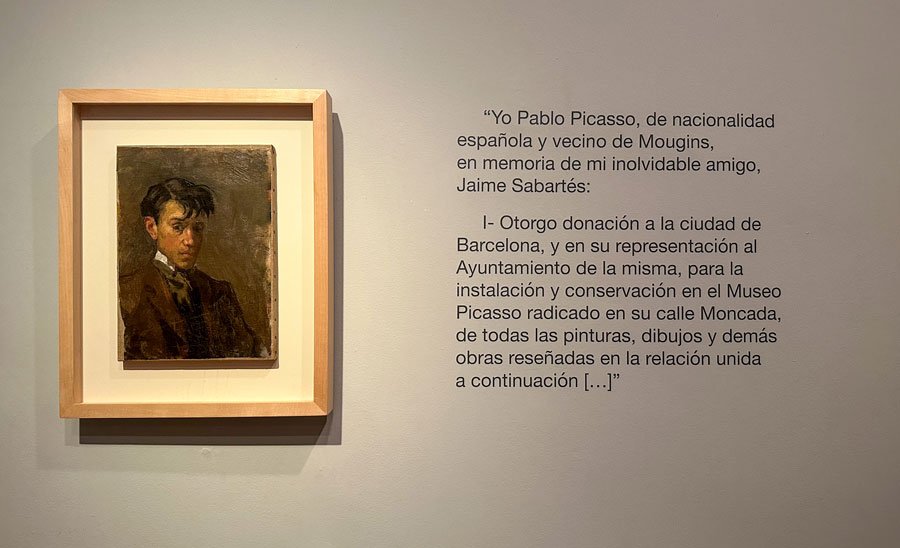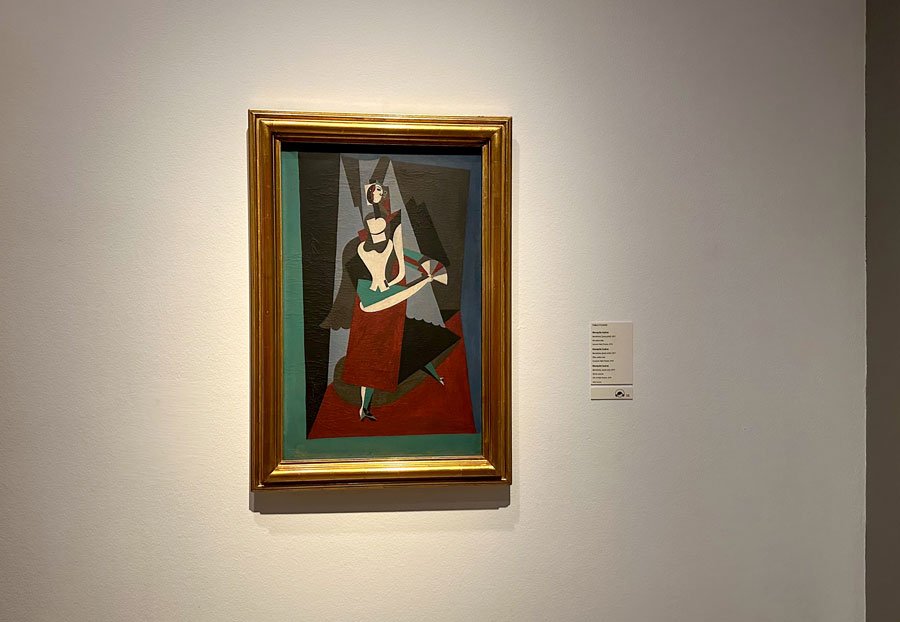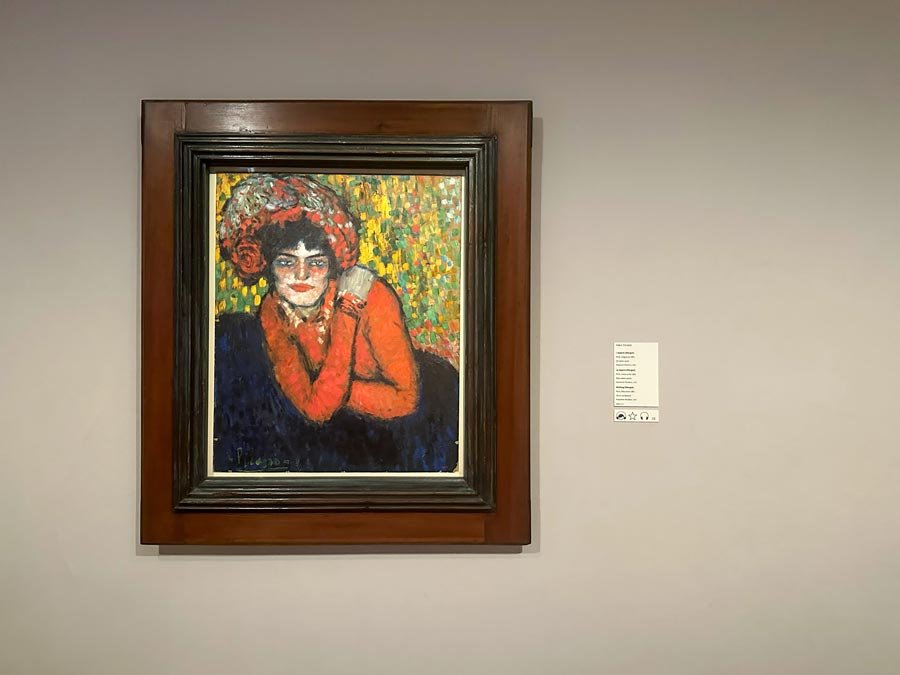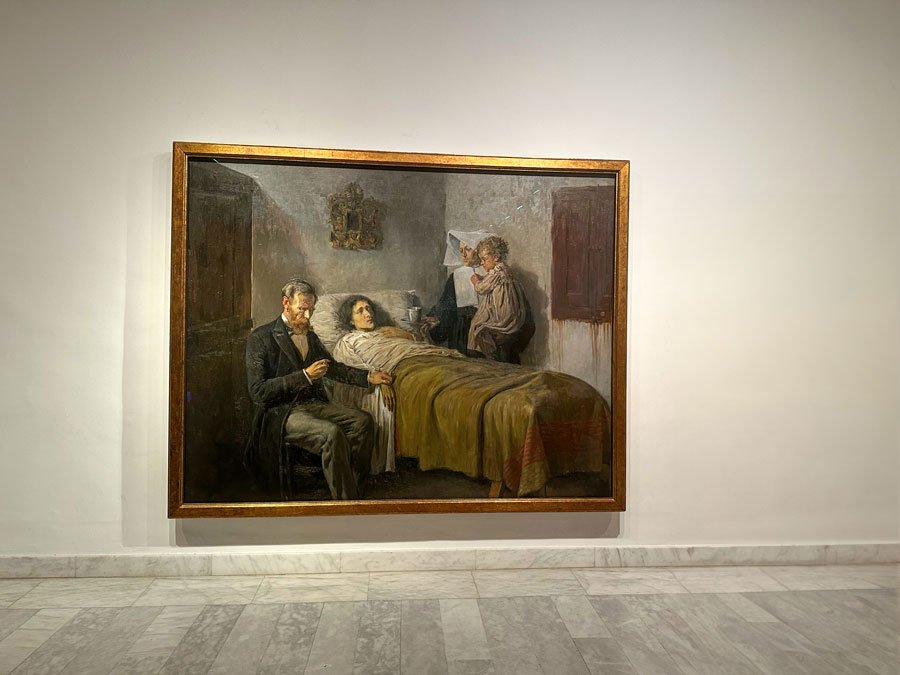In today’s article we have gathered some of the most famous paintings in the Museu Picasso in Barcelona, in el Born neighborhood, the museum that holds the greatest collection of the artist’s works. And there’s a reason behind it: the artist was always closely tied to the city of Barcelona. Let us share some details about the relationship between the city and the artist.
What was the connection between Picasso and Barcelona?
Picasso arrived in Barcelona in 1895. Born in Málaga, in 1895, he came to Barcelona with his family when he’s just fourteen years old. He stayed in the city until 1904. This period was pivotal in the artist’s life and left an indelible mark on his oeuvre.

In 1904, he moved to Paris; however, this did not sever his ties with Barcelona. Throughout his life, the painter made numerous returns to Barcelona to visit family and friends. As a result of this enduring connection, Barcelona is now home to the largest Picasso museum. And these are some of the most famous paintings in the Picasso Museum Barcelona:
El Arlequín (Léonide Massine), 1917
This painting represents Picasso’s initial foray into the performing arts realm, as he designed sets, costumes, and the grand drape for the Ballets Russes production “Parade,” led by Sergei Diaghilev. This marked his immersion into dance and theater, shaping the artwork’s lively colors and fragmented forms to mirror the energy of the performance world.
The model is Léonide Massine, a Muscovite dancer and choreographer with Ballets Russes. Picasso transformed Massine into “Arlequín”, exploring the character’s commedia dell’arte origins. A painting created upon his return to Barcelona, in 1917.

Blanquita Suárez, 1917
During those six months that Picasso stayed in Barcelona in 1917, he also created “Blanquita Suárez”. In that time, Picasso immersed himself in entertainment venues, reflected in this oil painting featuring Blanquita Suárez, the comic actress who participated in a show at Tívoli Theatre in June that year.

La Espera (Margot), 1901
On his second trip to Paris, Picasso managed to hold an exhibition of his works inspired by Parisian life. This exhibition included “La Espera” (Margot), and despite the identity of the protagonist remaining unknown, according to Picasso’s own testimony, she was a woman he often saw at a café.

Las Meninas, 1957
In 1957, Pablo Picasso produced a series of 58 paintings known as “The Meninas”. In this collection, he conducted a meticulous examination, reimagining and reinterpreting Diego Velázquez’s “Las Meninas”. This is the first painting of the series through which Picasso reflected his interpretation of Velázquez’s “Las Meninas.”

Ciència i Caritat, 1897
In the beginning of 1897, Picasso initiated the creation of this painting with the aim of strengthen his position in the Spanish art world. Following the principles of late 19th-century Social Realism, this artwork marks the conclusion of his initial artistic period.




